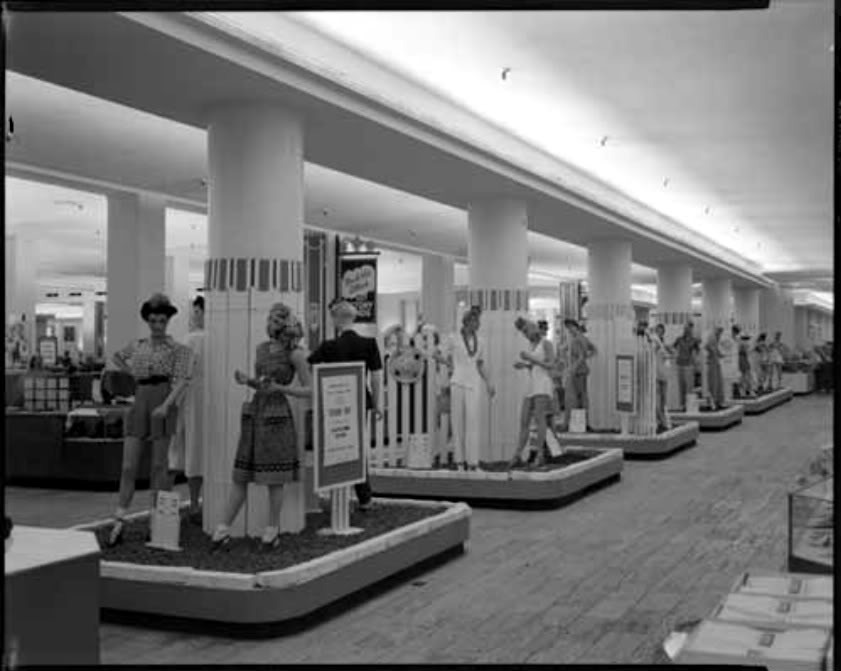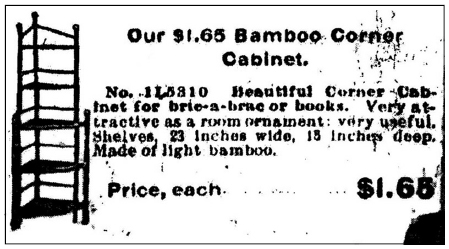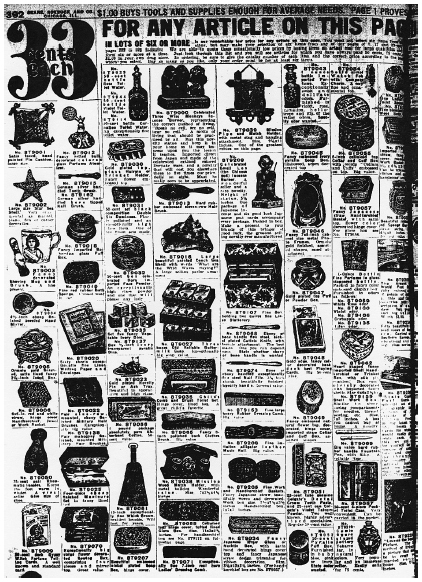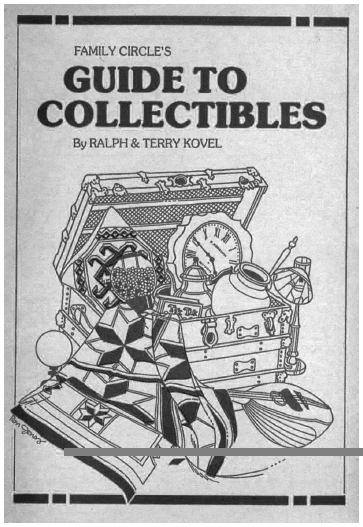Factors Contributing to Hoarding
Based on the assumption that women are more likely to hoard by compulsive acquisition through shopping, it is of interest to discuss the ways in which female retail consumption was transformed around the turn of the century, redefining the ways in which goods were bought and sold. William R. Leach analyzes the transformative effects of the department store between 1890 and 1925, which he argues exerted an “emancipating power of consumer culture” over working and middle-class women, who crafted imaginative reconceptions of themselves as women within that culture. He accounts for the strong manipulation and utopian influence of capitalism, but also the free choice on the part of the women, which is an important element to emphasize when discussing consumption.
In cities across North America, department stores began to dramatically alter both physical space and the daily routines of inhabitants. Leach highlights the stores’ festive atmospheres and the phenomenon of the department store window, which brought the magic and illusion of consumption into people’s everyday routines on city streets. Department store shopping and the goods it promised were also democratizing: “For the first time, women of nearly any economic bracket could choose from a spectrum of mass-produced, increasingly streamlined everyday wear and sportswear. By purchasing imitation jewels, artificial silk and furs, cheap perfume- all new on the market- women could partake of both the luxury and theatrical behaviour of the rich.”
In addition to the numerous benefits that department store shopping offered for female shoppers, the lure of the stores also brought about more sinister implications. A New York Times report from the 1880s commented on “the awful prevalence of the vice of shopping among women… every bit as bad as male drinking or smoking.” This analogy demonstrates the stigma attached to compulsive consumption as an addictive behaviour long before hoarding disorder became recognized as a condition. Leach observes that “Through a multitude of display devices, merchants ‘encouraged’ women to ‘indulge their own desires,’ to buy without much thought or reflection. Such encouragement might have released unsettling impulses, leading some women to shoplifiting. Still other women, who enjoyed the benefits of the new liberal credit policies, might have bought compulsively; they might have confused the possession of goods with the fulfilment of their longing for happiness. The outcome in both instances might have been great psychological disorientation and intense marital and family conflict.” While Leach’s speculations are based on highly plausible inferences with little concrete evidence from the period to establish concrete examples, the decades between the 1890s and 1920s did see an increasing number of court cases between husbands and wives who had bought beyond their means. So began a continuing key feature of hoarding disorder, which still causes tensions between hoarders and their personal relationships.
Another significant factor in the evolution of hoarding is the emergence of collecting as a hobby during the 1930s. Steven M. Gelber writes that “The category of leisure activity known as hobbies appears to have experienced an unprecedented growth in public acceptance in the United States during the great depression. Municipalities, schools, magazines and radio, regularly focused on hobby activity. Several national organizations emerged to promote hobbies, and the collecting activities of the President of the United States became a model for both children and adults.” It is of considerable interest to note that during the same period that the US government was launching a campaign against the hoarding of money in the wake of financial instability, it was simultaneously encouraging people to collect useless objects as a means of leisure activity. This signifies the meeting of hoarding as a behaviour of wealth and greed and hoarding as an accumulation of useless and worthless items.
The government held an agenda in promoting such activity at a time when unemployment and underemployment left an unprecedented number of people with time to fill, as noted by Gelber: “The word ‘hobby’ became a strategic term used to be less descriptive than to carry the weight on authoritative approval when applied to individual activities. In other words, the term ‘hobby,’ as used in the Thirties, was more an ideological construct created to distinguish between ‘good’ and ‘bad’ pastimes, than a natural category of leisure activity.” Respectability thus played a significant role in defining what constituted a hobby, which is a recurring feature in discerning hoarding from its more reputable counterparts. Gelber observes that “Collecting in particular was divided into good and bad categories. According to one writer, bad collections included collar buttons, tobacco tags, and birds’ eggs and nests.” Thus, a stigma was attached to those whose collections did not fall within the popular parameters set by collecting literature and campaigns, thereby ‘othering’ those whose interests lay in such items while simultaneously normalizing behaviours commonly associated with hoarding in those who did conform to acceptable hobbies.
In his discussion of the case of Andy Warhol, Herring shifts the pathologization of collecting to a “nonnormative engagement with collectibles,” with the argument that “individuals typed as hoarders disturb not only the idea of the collection or the activity of normal collecting but also the concept of the normative collectible—a subtle distinction that deepens our appreciation of how one is made, not born, a pack rat. This tweak in the nomenclature, we will find, further reflects how hoarders on the American front upset the modern material relations” that began in the 1930s with the Collyer brothers.
Reflecting back on a Newsweek commentator who snickered at Andy Warhol’s Sotheby’s auction as ‘the biggest garage sale ever’ and dismissed his inexpensive collections, Herring asserts that “she knowingly situated his stuff within a recent social environment for material cultures: the garage sale and its companion piece, the yard sale, which first appeared across the United States in the mid- to late 1960s.” While rummage sales had existed before, it was “only over the course of the 1970s [that] the garage sale captured the popular imagination and developed into a mainstream American institution, [and] by the end of the decade, the legitimation and institutionalization of garage sales was firmly established.” In other words, the discovery of Andy Warhol’s hoard coincided with continued transformation in means of consumption, adding a new dimension to hoarding’s respectability crisis.
Much in the same way that hoarding transitioned from being related to wealth to being related to worthless trash, collecting experienced a significant change towards inexpensive and mass-produced items. Herring notes that the Oxford English Dictionary cites 1955 as the origin of “things worth collecting, esp. rare, old, or interesting objects (not necessarily valuable or antique).” This is due to post-World War II mass-produced material cultures, which Herring argues was made possible “by a pre-World War II antiques culture, a wallet-emptying pastime that flourished in the early twentieth century and likewise emphasized the acquisition of Americana.” That shift saw the proliferation of collectors’ journals aimed at the white upper-middle class which featured advice on assessing antiques, systematizing the process of collecting and confirming it as no longer being an elite activity. Ultimately, these changes established a solid definition and distinction of acceptable collecting, which acts as a means of contrasting hoarding behaviours among people who take their consumption past the point of respectability.





